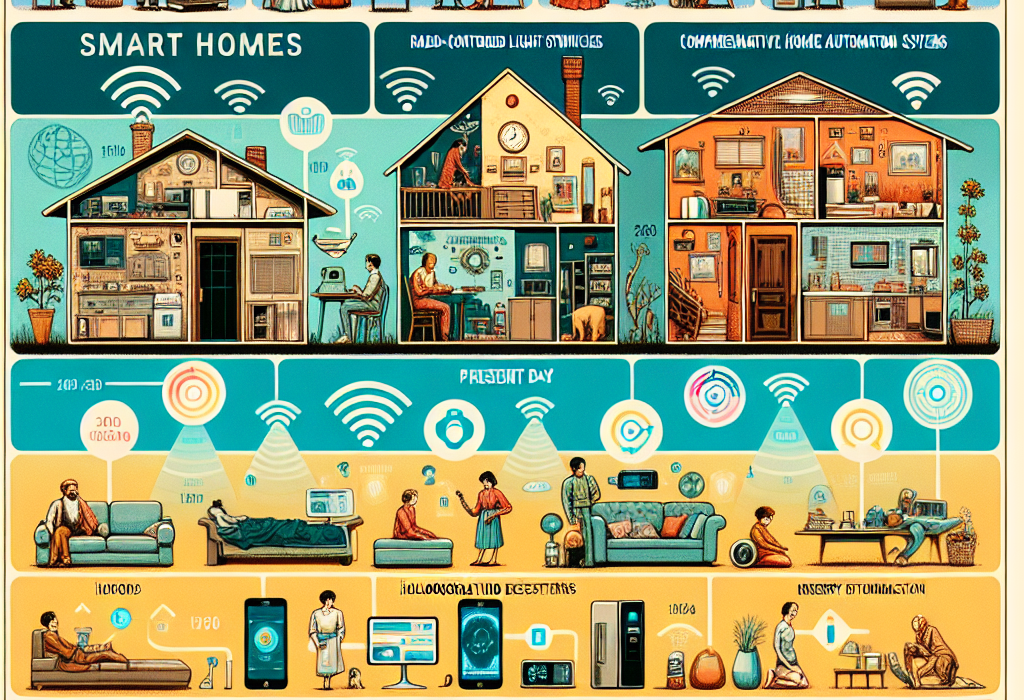The Evolution of Smart Homes: What’s Next?
The concept of a "smart home" has evolved dramatically over the past few decades. What once started as simple automation, like programmable thermostats and motion-sensor lights, has grown into an intricate ecosystem of interconnected devices that enhance convenience, security, energy efficiency, and overall quality of life. But with rapid advancements in technology, what does the future hold for smart homes? Let’s journey through the evolution and project what might be looming on the horizon.
The Beginnings: From Basic Automation to Connected Devices
Smart homes began with basic automation technologies. In the 1980s and 1990s, the introduction of devices like programmable thermostats allowed homeowners to control their heating and cooling systems more efficiently. These early innovations were primarily standalone systems, providing isolated convenience without significant interaction between devices.
The IoT Revolution: The Rise of Interconnected Systems
The early 21st century witnessed a dramatic shift with the advent of the Internet of Things (IoT). This technological leap allowed various devices to communicate with each other over the internet, creating a network of interconnected systems. Suddenly, everything from refrigerators to security cameras and lighting systems could be controlled from a smartphone or tablet.
Tech giants like Google, Amazon, and Apple entered the fray with their respective digital assistants—Google Home, Amazon Echo, and Apple HomeKit—making voice-controlled smart homes mainstream. Homeowners could now perform complex sequences of tasks with simple voice commands, such as setting the mood for dinner or securing the house before bed.
Integration and Interoperability: A Unified Ecosystem
One of the primary challenges in smart home evolution has been interoperability—the ability of different devices and systems to work together seamlessly. Over the past few years, industry leaders have worked towards creating unified ecosystems. Initiatives like the Matter standard aim to ensure that smart home devices from various manufacturers can operate smoothly together. This standardization is crucial for the next stage of smart home evolution, where user experience is streamlined, and device compatibility issues become a relic of the past.
Artificial Intelligence and Machine Learning: The Intelligent Home
The integration of Artificial Intelligence (AI) and Machine Learning (ML) has begun to transform smart homes into intelligent homes. AI-driven systems can learn and adapt to user behaviors, preferences, and routines over time. For example, an AI-powered thermostat can learn a household’s daily schedule, making real-time adjustments to save energy while maximizing comfort. Voice assistants, armed with natural language processing capabilities, can understand and execute complex user commands with increasing accuracy.
The Future: What’s Next for Smart Homes?
As we look ahead, several exciting developments are poised to redefine the smart home landscape:
1. Enhanced Personalization
Future smart home systems will offer hyper-personalized experiences. By leveraging advanced AI and predictive analytics, these systems will not just react to user commands but anticipate needs. Imagine a home that prepares your morning routine based on your calendar, weather forecasts, and personal preferences—starting the coffee maker, warming the bathroom floor, and adjusting the lighting even before you wake up.
2. Improved Energy Efficiency and Sustainability
Sustainability will be at the forefront of smart home technology. Expect to see more integration with renewable energy sources like solar panels and smart grids. Homes will become more energy-efficient through advanced monitoring and management systems that minimize waste and optimize resource use. For instance, smart water systems will detect leaks in real-time and provide usage insights to help conserve water.
3. Advanced Health and Wellness Monitoring
The integration of health and wellness technologies into the smart home environment will grow, offering more extensive monitoring and support systems. From smart mirrors that display your vital stats and health advice to intelligent air purification systems that monitor air quality and adjust in real-time, homes will play an active role in health and well-being.
4. Increased Security and Privacy Measures
As smart homes become more sophisticated, so will the measures to protect them. Expect to see advancements in biometric security systems, such as facial recognition and voice authentication, alongside more robust encryption and data protection protocols. Ensuring user privacy and security will be paramount as homes become more connected.
5. Interconnected Communities
Beyond individual smart homes, the concept of interconnected communities will emerge. Imagine entire neighborhoods where homes communicate with each other to optimize resources, share information, and create safer, more efficient living environments. Community-wide energy management systems, shared security networks, and collaborative disaster response plans are just the beginning.
Conclusion
The smart home revolution has come a long way from its rudimentary beginnings, evolving into a dynamic and intelligent ecosystem that is fundamentally transforming our way of living. As technology continues to advance, smart homes will become more personalized, sustainable, and secure. The future promises a seamless integration of technology that not only responds to our commands but anticipates our needs, creating a living environment that is not just smart but truly intelligent.
In this ever-evolving landscape, one thing is certain: the homes of tomorrow will continue to push the boundaries of innovation, making our lives more convenient, efficient, and enjoyable. The question is not just what’s next for smart homes, but when the next transformation will sweep through our lives, making the extraordinary the new ordinary.

